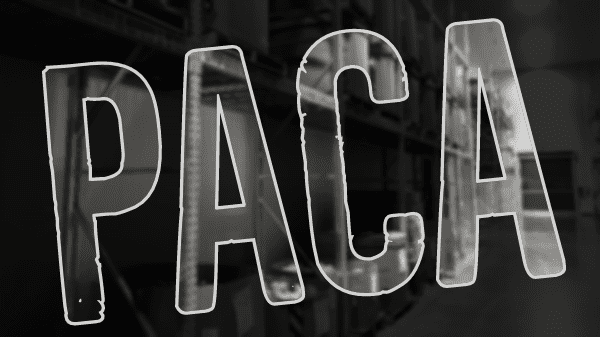Welcome to Blue Book!
Are you ready to join the thousands of companies who rely on Blue Book to drive smarter decisions? View our plans and get started today!
Still have questions? We’d love to show you what Blue Book can do for you. Drop us a line– we’ve been waiting for you.
Much has been written over the past few years about the competition between Walmart and Amazon, and which company will dominate in the online sales sphere. In the world of food, this discussion really heated up with the arrival of “Amazon Fresh.”
With Amazon’s entry into food delivery, and more specifically fresh produce, the competitive landscape became more intense. Peapod, Fresh Direct, and other regional online services have been operating successfully for many years, but the resources a company like Amazon can bring to the party certainly bears watching.
And while the idea of home delivery, especially perishable and fresh food, is an attractive one—the evolution of food shopping will be a blend of online and brick-and-mortar activity.
The supply chain components of a typical shopping trip goes something like this: (1) selection – deciding which items to purchase; (2) assembly – items placed in a cart or basket; (3) check out – pay and bag items; (4) transport – customer drives home; and (5) storage – items are put away in their proper environment.
In the world of fresh produce, about 80 percent or so of purchasing decisions are made on impulse. There are staple items such as bananas, but even there, consumer preferences vary widely with regard to size, color, and ripeness. This mirrors the very real challenge of dealing with fresh fruit or vegetables—the broad spectrum of grade and condition.
So let’s say a company can meet these specifications. It can assemble the product and take payment online, but then it runs into two challenges: getting the product to the buyer, and assuring the product arrives fresh and undamaged.
Both of these areas, especially transportation, can be quite expensive considering the relatively low retail value of the transaction. It is one thing to charge $20 to deliver a television, but quite another to charge $20 for a $50 grocery order. The risk of dissatisfied customers is very real, especially given the nature and perishability of fresh produce.
These challenges are not new. And as noted, many companies have developed a food home delivery business that is profitable—but this is but a fraction of the total grocery dollars being spent in the United States. The future of food shopping, as stated above, is a hybrid of online and in-store purchasing.
The ultimate grocery experience would be preordering routine replenishment items online (i.e., laundry products, soft drinks, cereals, snacks, bread, etc.), which would then be assembled at the store and ready for pickup (a number of retailers already offer this service). When shoppers arrive to pick up their orders, they are steered to all the things they actually enjoy shopping for—like fresh produce, bakery and deli items, seafood, or meat. If these fresh items took up the majority of a grocer’s floor space, and the rest could be ordered online, you turn an experience many people dislike (often ranked alongside public speaking and going to the dentist) into a more enjoyable experience.
Of course, this would require a major reconfiguration of most grocery stores, but it could be done.
So whether we’re talking about your local supermarket, Walmart, Amazon, Alibaba, Overstock.com, or any of the other companies competing in the home delivery arena, they all have an opportunity to succeed—to a degree. But the real future lies with the innovator who can create a seamless blending of online selection, preassembly, and physical shopping for fresh products. It doesn’t have to be an ‘either/or’—it can be an ‘and’ proposition.




